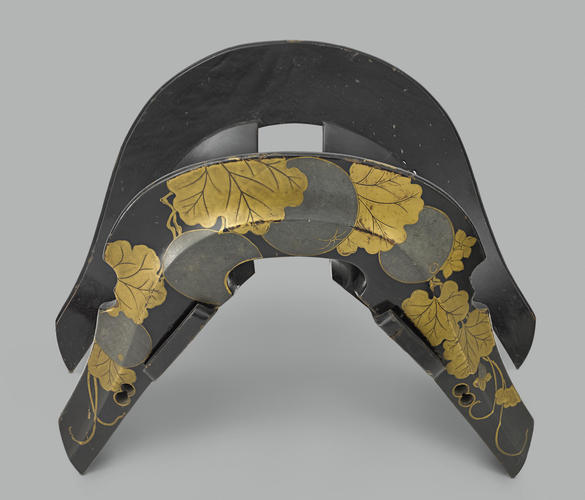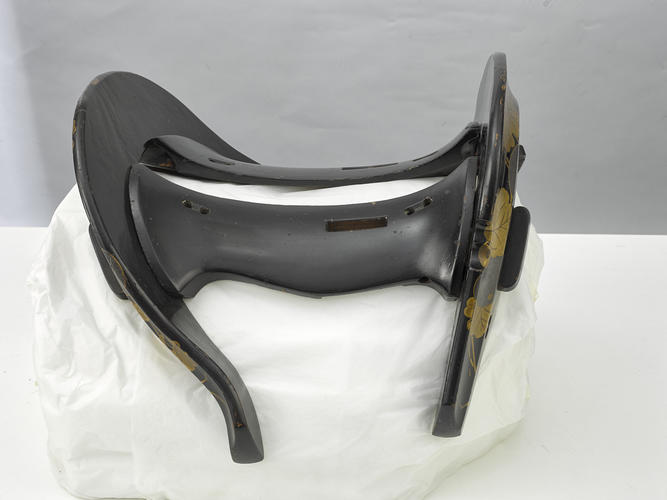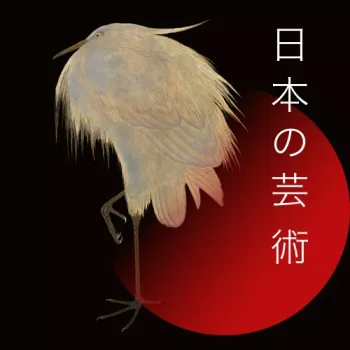Saddle tree (kura) 1580 - 1650
Wood, lacquer, lead foil | 28.0 x 39.0 x 45.0 cm (whole object) | RCIN 71609
-
Between the twelfth and fifteenth centuries, warfare was mostly carried out by cavalry using the long, deeply curved tachi and the bow (yumi). While the sword was always carried in battle, the bow was in fact the principal weapon of the mounted warrior. Over time, the samurai developed and mastered ‘the way of the horse and the bow’ (kyūba-no-michi) – a warrior tradition which eventually evolved into the philosophical and practical martial concept, bushidō (‘the way of the warrior’).
In action, the warrior stood up in the saddle to aim and fire his bow or to cut down with his tachi. Solid, comma-shaped stirrups were crucial in facilitating this (RCIN 71610). Curiously, the stirrups, rather than being of solid iron, as usual, only have an iron frame with a lacquered wood base, thereby rendering them impractical for use.
Although mass infantry were increasingly used in warfare during the Muromachi period (1392–1573), cavalry were still used as shock troops. The shape of the saddle tree and stirrups hardly changed throughout this time, so dating is difficult and relies more on the style of decoration. The lacquer and lead overlay depicting gourds and vines on this matched set of saddle and stirrups suggests they date from the Momoyama period (1573–1615). This dating has led to speculation that they formed part of Tokugawa Hidetada’s gift to James I in 1613, although they do not seem to be mentioned in any contemporary accounts.
Text adapted from Japan: Courts and Culture (2020)Provenance
Probably sent to James I by Shōgun Tokugawa Hidetada, 1613
Displayed on the south wall of the Grand Vestibule with other items of Japanese arms and armour in the early twentieth century (see RCIN 2100853). -
Creator(s)
(nationality) -
Medium and techniques
Wood, lacquer, lead foil
Measurements
28.0 x 39.0 x 45.0 cm (whole object)











